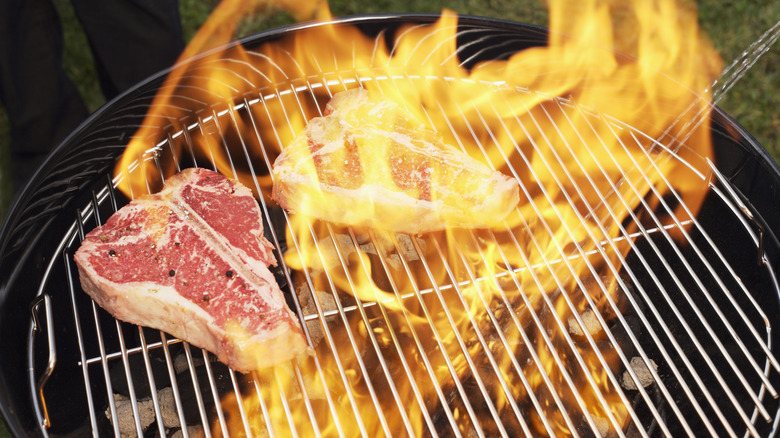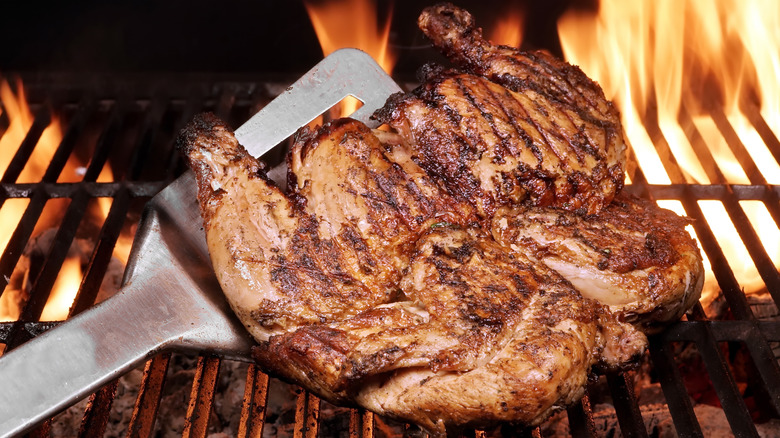Don't Disregard Grill Flare-Ups, Even Though They Look Cool
Nothing makes you feel like a grillmaster like turning out food that's perfectly cooked on the inside and magazine-pretty on the outside, complete with grill marks and a perfectly formed crust. Of course, producing an epic flare-up — one that you claim was totally intentional — might come in at a close second. You know what we're talking about: You shift your chicken thighs or hamburger patties, and a great wave of flame springs from below, causing the meat to sizzle and your arm hair to singe. It's one of the signatures of outdoor cooking to a lot of people.
Flare-ups are often unavoidable. They happen when the fat from the food drips onto the fire, wood, or charcoal, causing a grease fire of sorts. Many times, the flare-ups will subside after a second, but some can be severe, with the flames lasting for several seconds, maybe even growing larger as more fat is melted from the heat. Sure, fire is naturally part of grilling season, but too much can ruin a good thing when it comes to outdoor cooking. Avoid the urge to snap a picture of your impressive flare-up for Instagram and, instead, move quickly to tame that flame.
All fired up
A little flame can put a nice char on your chicken, but if you let it go on for long, you'll just end up with burned, dry food. All the texture and flavor that grilling provides is suddenly smoked, and no amount of A1 or barbeque sauce can save it. When a flare-up starts, move whatever food is causing it to a cooler part of the grill, and when the flames subside, continue cooking as normal; once the fat has finished dripping off, you shouldn't experience many, if any, flare-ups.
You can also smother the fire, particularly on charcoal grills. If moving the food around is not making the flame dissipate, put the cover on. Once the oxygen is gone from underneath, the flame will also go away. Never try to extinguish a flare-up with water as this will only cause the grease to spread, and you will potentially burn the food and yourself.
It's a good idea to gauge the fat factor of whatever you're grilling before you begin so you will know if you'll be looking at a potential flare up and you can plan accordingly (like keeping one side of the grill cooler). Foods with more fat, like skin-on chicken thighs and rib eye steaks are more likely to produce flames than skinless chicken breasts and filet mignons.

